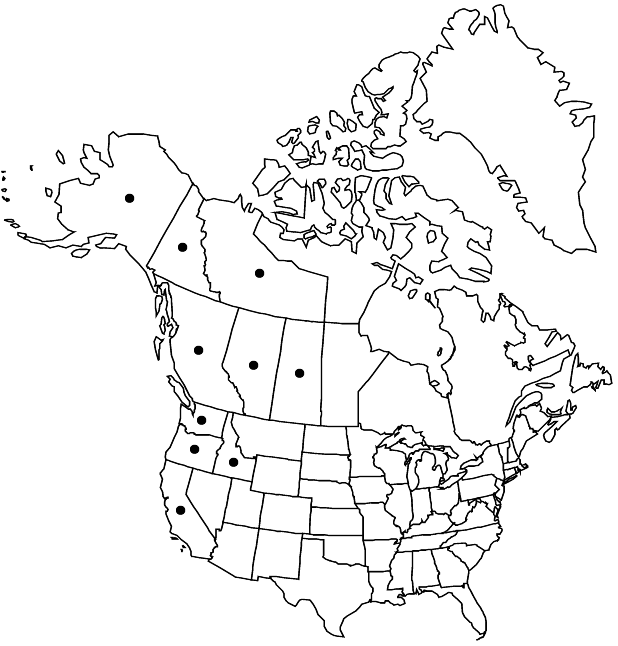Trientalis europaea
Sp. Pl. 1: 344. 1753 ,.
Stems 5–30 cm. Leaves whorled or densely crowded at stem apex, becoming alternate and progressively or abruptly smaller proximally; blades of distal leaves obovate or oblanceolate to spatulate (sometimes elliptic), 2–6 cm × 9–26 mm, widest beyond midlength, (proximal leaves smaller, 0.2–2 cm × 1–13 mm, only proximalmost ± scalelike), apex acute to rounded or obtuse. Pedicels 1–2, (1.4–) 1.8–5.5 cm, equaling or longer than leaves, sparsely to densely glandular, at least proximally. Flowers: corolla usually white, 5–9 mm, lobes ovate to broadly elliptic or lanceolate, apex acute to acuminate (or apiculate). 2n = 84; 70+, 90, 100, 110, 130, 160, 170 (all Siberia); ca. 128 (Norway); 112, 160 (Europe); 170 (Belarus).
Phenology: Flowering summer.
Habitat: Arctic tundra, moist spruce forests, stream banks, moist open meadows, sphagnum bogs and swamps
Elevation: 0-1600 m
Distribution

Alta., B.C., N.W.T., Sask., Yukon, Alaska, Calif., Idaho, Oreg., Wash., n Eurasia
Discussion
The Alaskan populations of Trientalis europaea have been segregated as T. arctica or T. europaea var. aleutica, based primarily on the number and size of leaves. E. Hultén (1927–1930, vol. 4) reduced these to T. europaea subsp. arctica; he indicated that they (along with populations from eastern Siberia) are merely “geographic races.” He later (1968) mapped them as discrete entities. Other taxonomists (e.g., S. L. Welsh 1974) found intermediates, which I corroborated by examination of herbarium specimens. I believe that a conservative approach is warranted until additional research is undertaken.
Selected References
None.
Lower Taxa
No values specified.